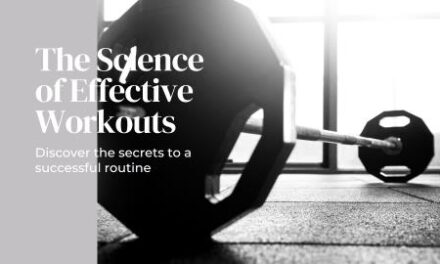Strength training isn’t only about muscle. It also helps you burn fat and improve heart and bone health. Plus, it can raise your mood and self-confidence while preventing injuries. If you’re new to this, we’ll explore different exercises and tools to help you meet your fitness aims.
Key Takeaways:
- Strength training offers numerous benefits, including fat burning, improved heart and bone health, enhanced mood, and increased confidence.
- Before starting a strength training routine, consult with a doctor for any concerns or medical conditions.
- Beginners can start with bodyweight exercises or invest in basic equipment like resistance bands, weights, and an exercise ball.
- Proper form, warming up, targeting all muscle groups, and allowing for rest days are crucial for beginners in strength training.
- Gradually increasing intensity, weight, and challenge over time can help beginners progress in their strength training journey.
Table of Contents
The Basics of Strength Training
Strength training is key for fitness. It uses resistance to make muscles stronger. You can use various exercises and equipment to fit your needs. This way, you can make your workouts suit you.
One big plus of strength training is it helps burn calories all day. Since muscle burns more calories than fat, having more muscle means burning more calories. So, strength training is great for managing your weight and fitness.
Strength training doesn’t just burn calories. It also makes your muscles, bones, and connective tissues stronger. This means your body’s overall structure is better, reducing injury risk. Your daily tasks become easier, and you feel less pain.
It’s also good for your heart. Resistance exercises improve heart health and lower blood pressure. Adding strength training to aerobic exercises enhances your cardiovascular fitness.
Strength training helps you sleep better too. Regular exercise improves the quality and length of your sleep. This helps your body recover and improves your mind and mood.
So, strength training is an excellent way to boost fitness and health. It helps you manage your weight, make your body stronger, and sleep better. Always check with a fitness pro before starting to make sure you do it right.
The Benefits of Strength Training
Strength training is great for everyone. It makes you stronger and improves your overall life quality. It helps with:
- Improved mood: It releases endorphins, which lower anxiety and depression.
- Enhanced confidence: You feel better about yourself as you meet your fitness goals.
- Better bone health: It builds bone density, lessening osteoporosis risks.
- Increased functional strength: Everyday tasks become easier.
- Better posture: Strong core and back muscles improve your posture.
- Reduced risk of chronic diseases: It lowers the risk of heart disease, diabetes, and some cancers.
Adding strength training to your routine really boosts your mental and physical health. It’s important to keep challenging your body over time with a good strength program.
| Key Benefits of Strength Training | |
|---|---|
| Burns calories and supports weight management | Enhances heart health and reduces blood pressure |
| Strengthens muscles, bones, and connective tissues | Improves quality of sleep |
| Promotes better overall structural integrity | Enhances mood and confidence levels |
| Reduces the risk of chronic diseases | Improves functional strength and posture |
Getting Started with Strength Training
Starting your strength training journey can be easy and fun. You don’t have to be a pro. Just follow some key steps to begin building strength and hitting your fitness targets.
Begin with bodyweight exercises. They use your own body as resistance and need no equipment. They’re great for beginners and can be done anywhere. Try push-ups, squats, lunges, and planks.
If you want to use equipment, start with basics like resistance bands, weights, and exercise balls. These are great for beginners. They offer many ways to work different muscles.
It’s important to focus on the right form to avoid getting hurt and to get the best results. Learn the best way to do each exercise. For beginners, it’s good to start with a simple program that works all your muscles.
Always warm up before working out. This gets your muscles and joints ready. Make sure to rest between workouts too. This helps your muscles recover and grow.
Remember, improving takes time. Begin with weights that are easy for you and gradually challenge yourself more. Listen to your body and adjust as necessary. Stay consistent with your workouts to really improve your fitness.
To help you start, here’s a simple beginner’s program:
| Exercise | Sets | Reps |
|---|---|---|
| Squats | 3 | 10-12 |
| Push-ups | 3 | 8-10 |
| Dumbbell Bicep Curls | 3 | 10-12 |
| Lunges | 3 | 10-12 (each leg) |
| Planks | 3 | 30 seconds |
If you’re unsure about anything, ask a fitness pro or personal trainer. By following these tips and being consistent, you’ll get stronger, fitter, and closer to your fitness goals.
Selecting the Right Exercises and Equipment
Choosing the right exercises and equipment for strength training is key. It helps you focus on specific muscles and make the most of your fitness journey. Mixing exercises for different body parts gives you balanced strength.
Exercises for Different Muscle Groups
There are many exercises to pick for strength training, each targeting different muscles. Here are some:
- Bench press: Targets chest, shoulders, and triceps.
- Overhead press: Works your shoulders and triceps.
- Bicep curls: Focuses on building strength in your biceps.
- Triceps extensions: Targets the triceps muscles.
- Squats: Engages your lower body muscles, including quadriceps, hamstrings, and glutes.
- Lunges: Works your leg muscles, including quadriceps, hamstrings, and glutes.
- Crunches: Engages your abdominal muscles.
For beginners, picking one or two exercises for upper body and three to four for lower body is good. This helps focus on certain areas while keeping your routine balanced.
Selecting the Right Equipment
The right equipment is key for effective strength workouts. Here are some popular options:
- Resistance bands: Offer different levels of resistance and can target various muscles.
- Dumbbells: Available in many weights, suitable for upper and lower body exercises.
- Exercise balls: Great for core exercises and various other movements.
Picking equipment should match your workout needs, goals, and budget. Start with basic items that fit your exercises and add more as you improve.

Equipment
Summary
Using a variety of exercises and the right tools can create a full strength training routine. Always consult a fitness pro to make sure you’re doing each exercise correctly.
Reps, Sets, and Progression in Strength Training
In strength training, the combination of reps, sets, and progression is key. These elements define your workout’s structure and growth path. Let’s explore why they’re so vital.
Repetitions and Sets
For beginners, it’s best to start with weights that are challenging yet doable for 8 to 12 reps. This approach builds both strength and endurance. You should aim to do 1 to 3 sets for each exercise. Take a rest for 30 to 90 seconds between sets. Rest is crucial as it helps muscles repair and strengthen.
Progression
As you get further along in your training, it’s essential to keep challenging your muscles. This helps with growth and avoids plateaus. Here are ways to advance:
- Increasing Weight: Add more weight as you get stronger to keep pushing your muscles.
- Increasing Repetitions: If reps become too easy, add more to boost endurance.
- Varying Exercises: Try different exercises for the same muscle groups to stay motivated and avoid boredom.
- Changing Rep Speed: Mix up your rep speeds, like slow or fast, to challenge your muscles in new ways.
Always progress at a pace that’s right for you. Pushing too hard can lead to injury. It’s wise to work with a fitness expert to make a plan that fits your goals and abilities.
Progress is different for everyone. Stay patient, consistent, and celebrate all successes. Strength training is about slow, steady gains and ongoing learning.
| Reps | Sets | Progression |
|---|---|---|
| 8 to 12 | 1 to 3 | Increasing weight, increasing repetitions, varying exercises, changing rep speed |
Benefits of Building Muscle Strength
Strength training builds muscle and brings many benefits. It makes workouts and daily activities better. It also boosts functional and mental health.
Making Everyday Movements Easier
Strong muscles make everyday tasks easier. They help with things like lifting groceries and climbing stairs. Muscle strength lets you do daily tasks better and with less effort.
Improving Balance and Stability
Exercises that target balance and stability muscles make a big difference. With stronger muscles, you’re less likely to fall. A strong core and lower body keep you stable during activities.
Building Bone Density and Reducing the Risk of Falls
Bone density grows with strength training. As we get older, we lose bone density, leading to more falls and fractures. Strength exercises help keep your bones healthy, lowering this risk.
Preserving Independence and Functional Ability
Strong muscles help older adults stay independent. They can do daily activities and care for themselves. Strong muscles mean staying autonomous and keeping a quality life.
Boosting Cognitive Well-Being
Strength training is good for your mind too. It releases endorphins, improving mood and lowering stress. It also helps with better sleep, boosting mental health.
Enhancing Overall Functional and Physical Health
Strong muscles improve your overall health. They help with a range of activities and physical fitness. Strength training improves cardiovascular health and helps keep a healthy weight.

| Benefits of Building Muscle Strength |
|---|
| Makes everyday movements easier |
| Improves balance and stability |
| Builds bone density and reduces the risk of falls |
| Preserves independence and functional ability |
| Boosts cognitive well-being |
| Enhances overall functional and physical health |
Starting Small and Staying Consistent
Starting a strength training journey is about beginning with small steps. It’s vital for beginners to set small goals and keep moving. This approach helps build fitness without feeling overwhelmed.
Consistency is crucial in reaching fitness goals. By sticking to regular sessions, even short ones, you can see great results. Your body gets stronger and adapts to the routine, improving steadily.
For novices, trying strength exercises twice a week is a great start. Even 20-minute sessions are enough, making it easy to fit into a schedule. The key is to be consistent, not spend hours working out. It’s about balancing with your life and goals.
Starting with simple exercises is still effective. Beginners should focus on moves that work the major muscles. As you get stronger, you can move on to more challenging exercises. Keeping the routine varied avoids boredom and keeps challenging the body.
The path to getting fit and strong is a long one. Setting real goals and appreciating every success is important. Even small progress is progress toward a better, stronger you.
Keep up the commitment and consistency. You’ll be surprised by what you can accomplish on your strength training journey.
The Joys and Challenges of Strength Training
Strength training brings joy and satisfaction when you feel stronger. It makes you feel accomplished and boosts your overall well-being. Through exercises, you see your progress, celebrate milestones and meet personal goals.
As your muscles get more defined, your sense of achievement and pride grows. Exercising releases endorphins. These make you happy and positive.
Yet, strength training has its challenges. Balancing workouts with daily life can be hard. Work, family, and personal time often leave exercise last. Plus, it can be tough physically, making you work hard and stay disciplined.
“Strength does not come from physical capacity. It comes from an indomitable will.” – Mahatma Gandhi
Despite challenges, even short sessions can be very beneficial. A few minutes a day or week boosts fitness and well-being. Realistic goals can make training more doable. Celebrating small wins keeps you motivated and positive.
The Mental Joy of Strength Training
Strength training is good for both body and mind. It builds self-confidence and self-esteem. You see your own progress and transform. It releases endorphins, which make you happy and reduce stress and anxiety.
Achieving fitness goals makes you feel better mentally. It helps you handle day-to-day stress naturally.
The Challenges of Consistency
Staying consistent with strength training can be tough. It’s hard to fit workouts into a busy schedule. Think of it as a long-term investment in your health. Making a routine and setting a workout schedule can help make training a key part of your life.
The benefits of strength training outweigh the challenges. With hard work, discipline, and a good attitude, anyone can face the hurdles and enjoy having a stronger body.
| Joys of Strength Training | Challenges of Strength Training |
|---|---|
| Increased strength and muscle tone | Lack of time and energy |
| Improved confidence and self-esteem | Mental and physical fatigue |
| Enhanced overall well-being | Physical discomfort and soreness |
| Release of endorphins and improved mood | Commitment and consistency |
Conclusion
Strength training is key for any fitness journey. It gives lots of benefits for both your body and mind. Adding it to your routine can make you stronger, more capable, and boost your fitness.
Start light and build up slowly. You don’t need to start with heavy gym weights. Try simple exercises at home or get some resistance bands or small weights. Keep at it regularly and you’ll quickly notice improvements.
Strength training brings awesome rewards. It not only makes you fitter but also more confident and happier. It’s great for your overall health. So, focus on strength training in your fitness plan and enjoy its many benefits.
FAQ
Why is strength training important for beginners?
What is strength training?
How can beginners start strength training?
What exercises and equipment are commonly used for strength training?
How many reps and sets should beginners do?
What are the benefits of building muscle strength?
How often should beginners do strength training?
What are the joys and challenges of strength training?
Why should beginners incorporate strength training into their fitness journey?
Source Links
- https://www.verywellfit.com/complete-beginners-guide-to-strength-training-1229585
- https://www.nytimes.com/2022/10/12/well/move/strength-training-beginners-guide.html
- https://www.self.com/story/8-strength-exercises







Recent Comments